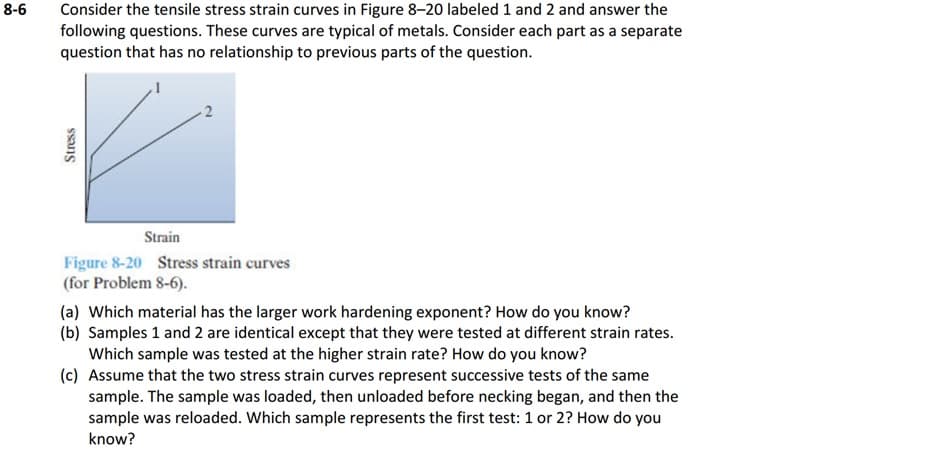Consider the tensile stress strain curves in Figure 8-20 labeled 1 and 2 and answer the following questions. These curves are typical of metals. Consider each part as a separate question that has no relationship to previous parts of the question. (a) Which material has the larger work hardening exponent? How do you know? (b) Samples 1 and 2 are identical except that they were tested at different strain rates. Which sample was tested at the higher strain rate? How do you know? (c) Assume that the two stress strain curves represent successive tests of the same sample. The sample was loaded, then unloaded before necking began, and then the sample was reloaded. Which sample represents the first test: 1 or 2? Haw do you know?
Consider the tensile stress strain curves in Figure 8-20 labeled 1 and 2 and answer the following questions. These curves are typical of metals. Consider each part as a separate question that has no relationship to previous parts of the question.
(a) Which material has the larger work hardening exponent? How do you know?
(b) Samples 1 and 2 are identical except that they were tested at different strain rates. Which sample was tested at the higher strain rate? How do you know?
(c) Assume that the two stress strain curves represent successive tests of the same sample. The sample was loaded, then unloaded before necking began, and then the sample was reloaded. Which sample represents the first test: 1 or 2? Haw do you know?

Trending now
This is a popular solution!
Step by step
Solved in 2 steps









